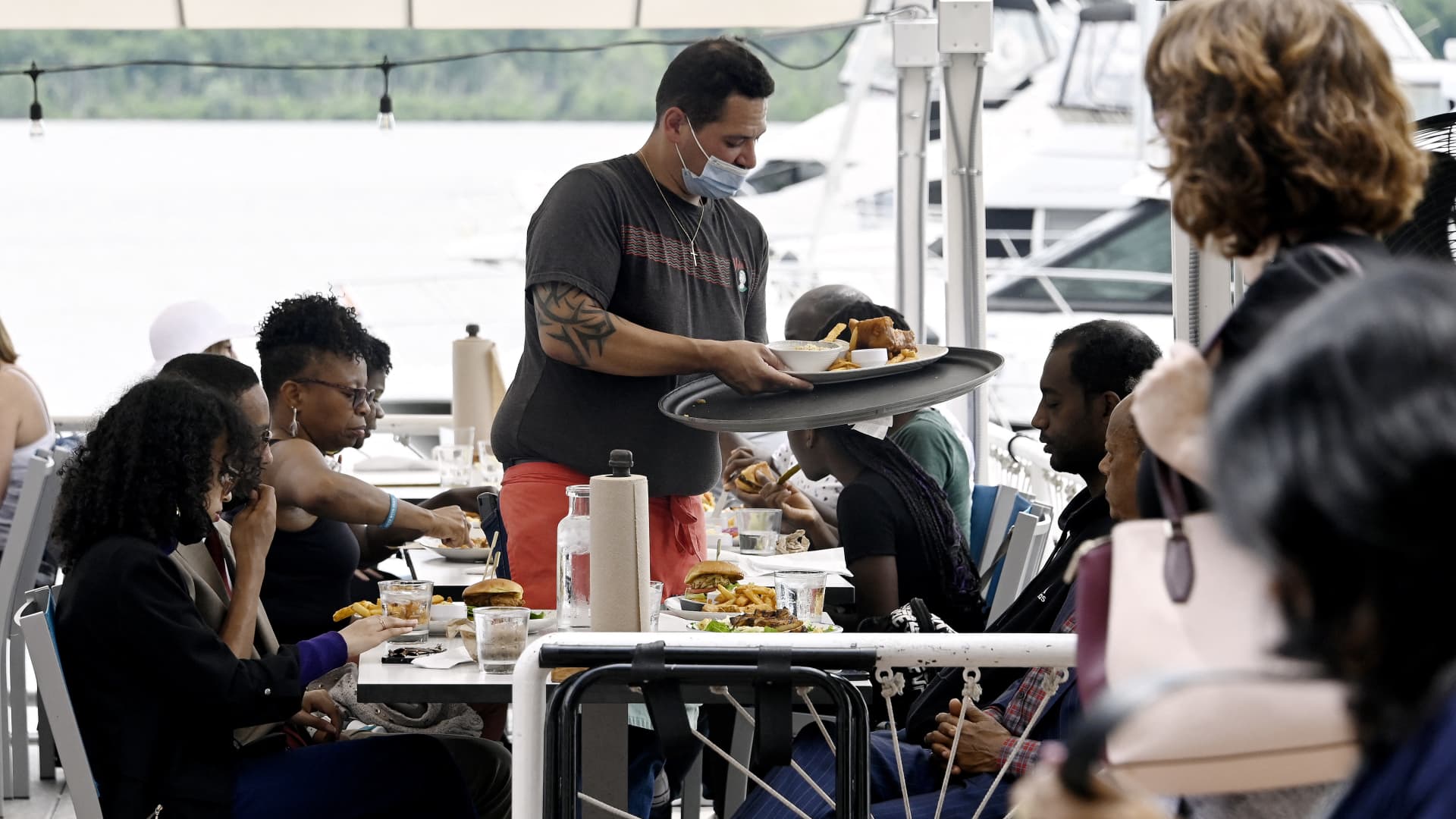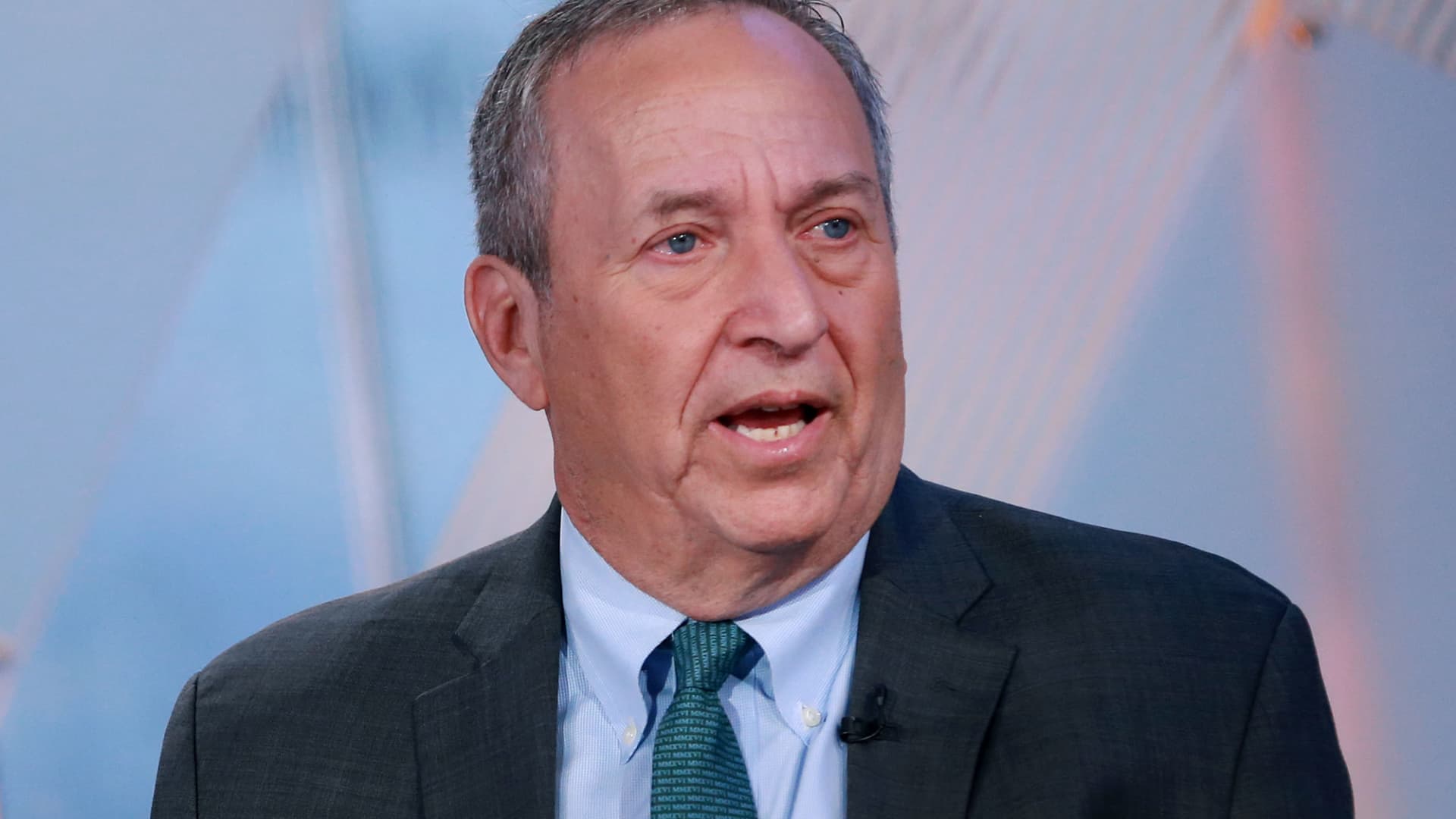
A waiter works at a restaurant in Alexandria, Virginia, on June 3, 2022.
Olivier Douliery | AFP | Getty Images
Jeff Rothenberg has grown accustomed to long wait times at restaurants, even when tables are visibly open.
“Another restaurant we went to had open seats outside, but when we went to the host, they mentioned that the kitchen was short-staffed,” Rothenberg, an operations director at a California-based fintech firm, told CNBC. “So although he had seating, he was going to put us on a 30-minute waitlist to be seated.”
Rothenberg was on the 30-minute waitlist for nearly an hour, he said. Then, after he was seated, he waited another 45 minutes for his food to arrive.
“It was the type of experience that makes me not want to eat out as much,” he said. “I felt bad for the servers, because they were trying, but they could only do so much, not having enough cooks.”
It’s a scenario that has been repeated across the food service industry since the Covid pandemic began in 2020, and it’s taking a toll on restaurants and their staff, as well.
Lockdowns in spring of that year led to layoffs and furloughs for many cooks and waitstaff, prompting the federal government to back billions of dollars in forgivable loans for small businesses. The disease ravaged the U.S. workforce, killing more than a million people over the course of two-plus years while sickening many millions more, according to the Centers for Disease Control and Prevention.
As states relaxed their restrictions, restaurant employment recovered, although the industry is still down 750,000 jobs — roughly 6.1% of its workforce — from pre-pandemic levels as of May, according to the National Restaurant Association.
Customers are noticing the difference. In the first quarter of 2022, customers mentioned short staffing three times more often in their Yelp reviews than in the year-ago period, according to the restaurant review site. Mentions of long waits rose 23%.
“I think the experience has been different since Covid. I see that the restaurant industry has changed a lot,” Nev Wright, a health-care worker, told CNBC outside Firebirds Wood Fired Grill in Eatontown, New Jersey. “It wasn’t always like this — now it takes time, with expenses and shortages of staff and everything.”
The American Customer Satisfaction Index found that consumers were less happy with fast-food chains this year compared with 2021 — the sector’s score slipped to 76 out of 100, from 78. Customers were less satisfied about the speed and accuracy of their orders and about the cleanliness and layout of the restaurant.
The customer satisfaction scores for independent and small chain restaurants also dropped this year, to 80 out of 100, from 81, according to ACSI’s annual report. Some national full-service chains saw their scores fall even more year over year: Dine Brands’ Applebees dropped 5%, Darden Restaurants’ Olive Garden 4%, and Inspire Brands’ Buffalo Wild Wings 3%.
‘Everything is very weird’
Eatontown resident Theresa Berweiler said that over the past year she has been met consistently with early closing times and long waits at restaurants, even when they aren’t busy.
“I’m 64 years old, and I’ve never seen anything like this,” the receptionist told CNBC on Wednesday outside a local Chick-fil-A. “Everything is very weird. Covid has definitely changed the world, and I’m not sure for the better.”
Restaurants aren’t the only businesses seeing the labor crunch hit customer service. U.S. consumer complaints against airlines more than quadrupled over pre-pandemic levels in April, according to the Department of Transportation. Hotelier Hilton Worldwide isn’t satisfied with its own customer service and needs more workers, CEO Christopher Nassetta said on the company’s quarterly earnings call in May.
For restaurants, staffing challenges have put pressure on an industry already struggling with inflation and recovering lost sales from the pandemic. Alexandria Restaurant Partners, a group that owns and manages eight restaurants across Florida and Northern Virginia, has dramatically changed the way it does business.
“We’re not sure where all the workforce went, but a lot of them have disappeared, from managers to chefs to hourlies,” said Dave Nicholas, a founding member of ARP.
A chef prepares food in the kitchens of Café Tu Tu Tango, a popular restaurant in Orlanda, Florida.
Source: Alexandria Restaurant Partners
Now, Nicholas said, his focus is on hiring and retention. The group opened a recruitment position and now has two full-time recruiters working to bring much-needed employees into jobs with higher wages and better benefits than the group has ever had.
“Before, you could hire them as fast as you needed them. These days, that’s not the case,” Nicholas said. “Our mission is to be the employer of choice. That comes with benefits we maybe didn’t have before, down to servers, busboys and dishwashers. The cost of that has been enormous, but the cost of turnover is enormous, so we weighed it.”
But not all workers are taking home more pay, even if their baseline wages increased. Saru Jayaraman, director of the Food Labor Research Center at the University of California Berkeley and president of One Fair Wage, which advocates abandoning the tipped wage, said frustration from understaffing often results in lower tips for workers. In turn, lower pay leads many restaurant employees to quit, exacerbating the issue.
“It’s a vicious cycle of people being unhappy with the service that may tip less, then they don’t come back, and sales are down,” she said.
The restaurant industry has historically struggled with high turnover. The issue has only intensified during the Covid pandemic as employees seek better pay and working conditions, worry about getting sick, and have difficulties finding child care. The accommodation and food service sectors had a quit rate of 5.7% in May, according to the Bureau of Labor Statistics.
Nicholas said that despite ARP’s recent rollouts of retention bonuses and partner programs, in addition to higher wages and better benefits, it’s been a “battle” to contend with the labor market.
Full-service restaurants have been hit harder than limited-service eateries by the labor crunch, with staffing down 11% from pre-pandemic levels.
And that means the experience of eating out likely won’t be the same anymore.
“Going to a restaurant and having them bring over bread with butter,” said Nicholas Harary, owner of Barrel & Roost, a restaurant in Red Bank, New Jersey, “those days are over.”







